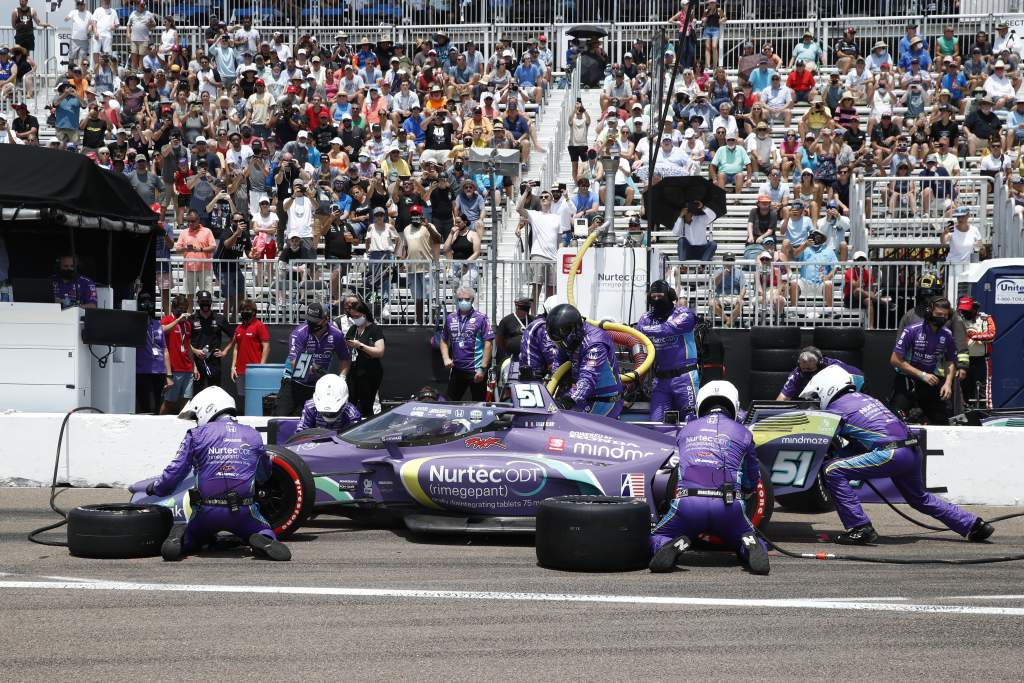Romain Grosjean’s switch to IndyCar was one of the biggest stories of the off-season, and now he’s got his first two races under his belt.
Grosjean isn’t doing the ovals so he missed Texas last weekend, and that’s allowed time for reflection.
With a brilliant seventh in qualifying on his debut, and a 10th and a 14th in the races so far, it’s been a strong debut considering his minnow Dale Coyne Racing team is up against 12 cars from the Andretti, Ganassi and Penske ‘big three’ stables. That’s before you even look at the other three or four teams with more resources at their disposal.
Grosjean hasn’t yet spoken at length to the media following his first two outings, but The Race called Olivier Boisson – Grosjean’s engineer – to get the inside take on how Grosjean’s adaptation has gone.
“For us, it was a good start to the season,” Boisson tells The Race.
“It’s not an easy series to come into, it’s very competitive, fast guys everywhere.
“Our first race weekend, for him to qualify P7 was pretty much a statement of his speed and his skills as a race car driver. We should have been a bit faster than that because he got a bit blocked on his fast lap.
“In IndyCar if you can make it out of Q1 [two groups of 12, six cars from each advance] it’s pretty good. You see a lot of fast guys sometimes don’t make it out of Q1.
“Between the different tyres and track conditions that change – I know the tyres aren’t as peaky as the Formula 1 tyre, the Pirelli, but it’s still tough, the laptimes are so tight, you miss it by a tenth of a second and it’s over.
“We had a bit of difficulty in the race with some mechanical [issues] on the car – it made his job a lot harder and we were impressed that he kept going – but still finished pretty strong given the circumstance.
“St Pete was a different learning experience because it’s a street course where you don’t really have a chance to go testing.
“So it was a little bit more complicated but he definitely showed some pace in practice two we were ninth on the red tyres and in qualifying we just made a change and went the wrong way. And the track must have changed too because a lot of guys spun or hit the wall in qualifying so the track got very tricky and we didn’t qualify very well.
“But I think we learned a lot and definitely shows he is definitely quick.
“There’s no question, he he can bring the heat.”
Turning it up “to 11”
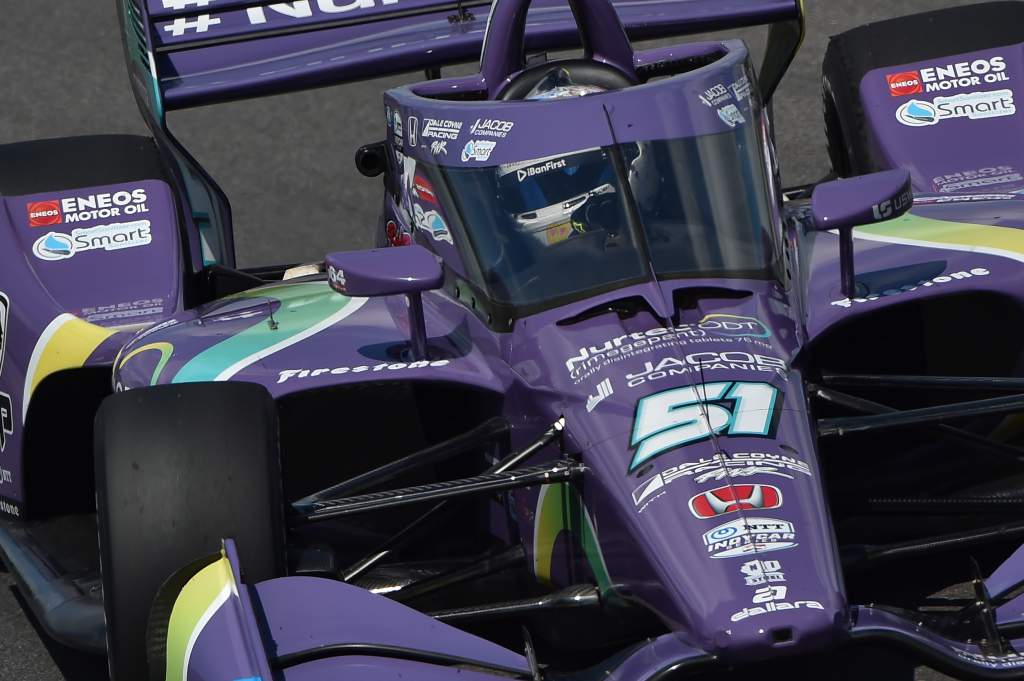
Grosjean was always on the ragged edge in F1, more recently because the Haas car often wasn’t quick enough. It did breed some errors, but since coming to IndyCar Grosjean has been the rapid and mistake-free driver we know he can be.
His pace in qualifying is what Boisson has picked out as being the most impressive aspect of his driving so far.
“His driving skill and his confidence, even you saw in Barber, he’s just building up to the laptime, he is learning very quick.
“But basically when it comes to qualifying he brings it to the next level. I was just very impressed with the amount of speed and what he could do in qualifying over one lap when it’s short on time, he just turns it up to 11 and just gets going. It was pretty impressive.”
For context, to miss out on the ‘Fast Six’ – IndyCar’s equivalent of a Q3 pole shootout – by 0.069 seconds was phenomenal, especially as ahead of him was 2006 Indianapolis 500 winner Alexander Rossi and behind him was two-time IndyCar champion Josef Newgarden.
How the Honda sim changed their season

Just after Grosjean signed for Coyne, Honda Performance Development’s head of vehicle performance Ben Schmitt told The Race how important getting Grosjean into HPD’s simulator would be.
Honda’s US motorsport arm had experienced a boost at a key time when Fernando Alonso arrived for the Indy 500 in 2017 and provided feedback on its simulation. There’s no doubt it expected similar from Grosjean.
But as important as the sim was and is for Honda, it was even more so for Grosjean and Dale Coyne as while he’d tested at Barber and Sebring, most of those tests were about getting comfortable in the car rather than performance work. The sim helped Grosjean and the team to find that performance ahead of the season opener.
“Honda really, really helped us to make room for him on the simulator and it’s definitely helped him but it helped us too because the race weekends are so quick,” says Boisson.
“You have one or two practice then qualifying and race. There’s a lot of things we can’t be testing.
“So to show up with something that’s pretty close is important and to be able to work with him on the simulator on the set-up side but also for him to learn the racetrack and then try to work on some details, that definitely was big for us to get up to speed.”
Adapting his driving style and set-up from F1
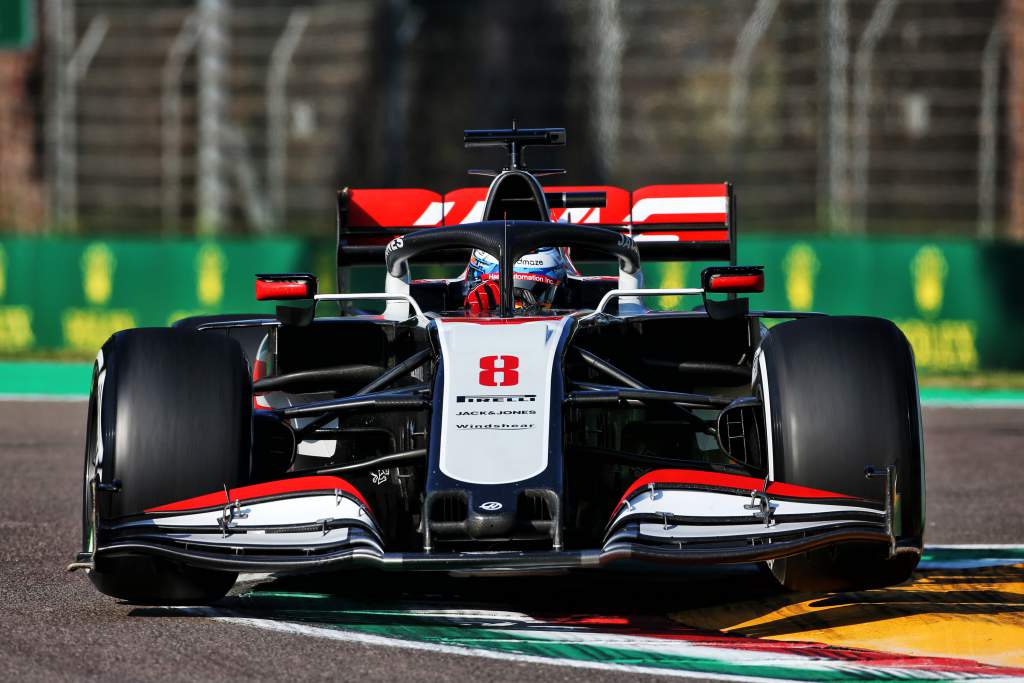
In F1, Grosjean favoured braking late and a fairly aggressive turn-in relying on a relatively stable rear, but if anything he favoured oversteer ahead of understeer in order to get the car to rotate mid-corner.
Obviously he’s had a very significant change of machinery for this year, so The Race asked what Grosjean has been asking for from the car and how much adapting he’s had to do.
“It’s just about giving him something he can walk with,” Boisson says.
“He’s a quick learner, he’s really good at figuring out what he needs to do. To be fast with these cars, you have to have a little bit of oversteer, understeer can’t be fast in those cars and he’s OK with it.
“Every driver has a point where it could become too much [oversteer] but he’s definitely got a good tolerance for the rear being a bit lively, which makes life easier because I think that’s what you need to be fast.
“He’s very quick to adapt, he’ll look at data really quick, then realise ‘OK, yeah I need to do that this way, no, I need to do this, this way’ and he goes and does it, it’s very amazing.”
Digesting data
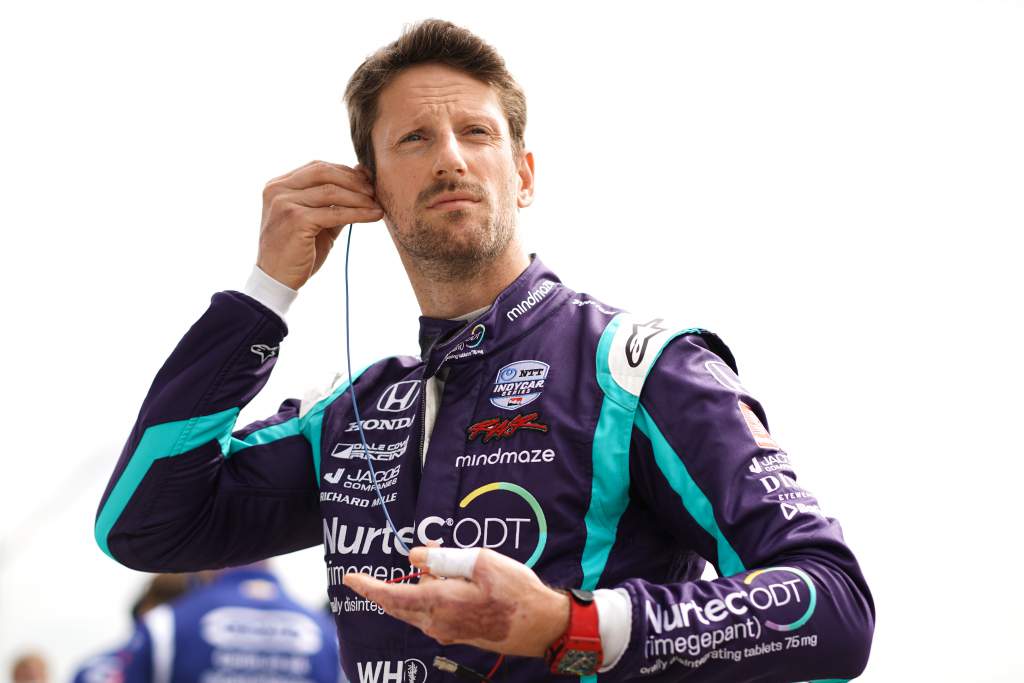
Speaking of quickly interpreting the information at hand, obviously that’s a huge part of F1. But coming to IndyCar, the data is presented in a different way, using different software. So that takes a bit of time to adapt to.
“He looks at data with me or my assistant engineer but he’s also got a computer where he can look at data himself and we put all the data between the two drivers in the system,” Boisson adds.
“He learned the system really quickly because he’s able to just look at the data on his own. When we debrief, we talk, we look at stuff together and then he goes in the corner, and keeps studying by himself so he’s very quick to adapt to that, for sure.”
Where will the improvements come from?
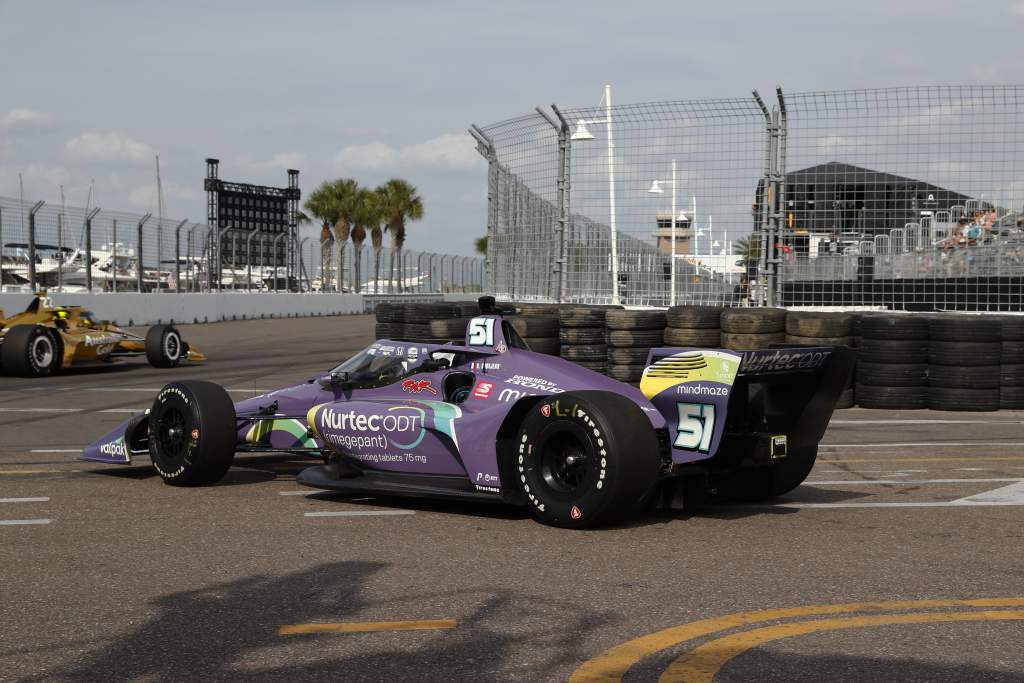
Dale Coyne is not a regular frontrunner in IndyCar usually across a season, more just in the odd race – and there are a couple of areas where it and Grosjean can find time.
Attacking pit road is a big one, as the series regulars make up so much time here and even the veterans of the championship can mess this up.
On the team side, complementing that with rapid pitstops for the #51 car is important, especially when the field is so close together.
While it’s definitely a flawed system of ranking the pit crews as it doesn’t take number of pitstops into consideration, the Firestone Pit Award has Grosjean’s team 17th through the four races (Pietro Fittipaldi crashed out of the last race so it scored nought).
It’s better than 17th in reality, but still pit work is always something that can be improved even for the top teams.
“On the team side we have to work on pitstops, we have to work on in- and out-laps. Start and restarts, we need to be better,” admits Boisson.
“So we are just looking at data to try to show him what to do and what we need to improve.
“On the car itself, he’s got a pretty good idea as he’s driven the car a few times now what we’re looking for to be able to go faster.
“So we’re just trying to figure out the details.”
The in- and out-laps are complicated by using (or not if you’re saving fuel) push-to-pass on road and street circuits, while restarts are a whole other beast in IndyCar and those will improve with time for Grosjean. He did struggle at the start at Barber, but he’s looked more assured since then.
‘Happy to be here’
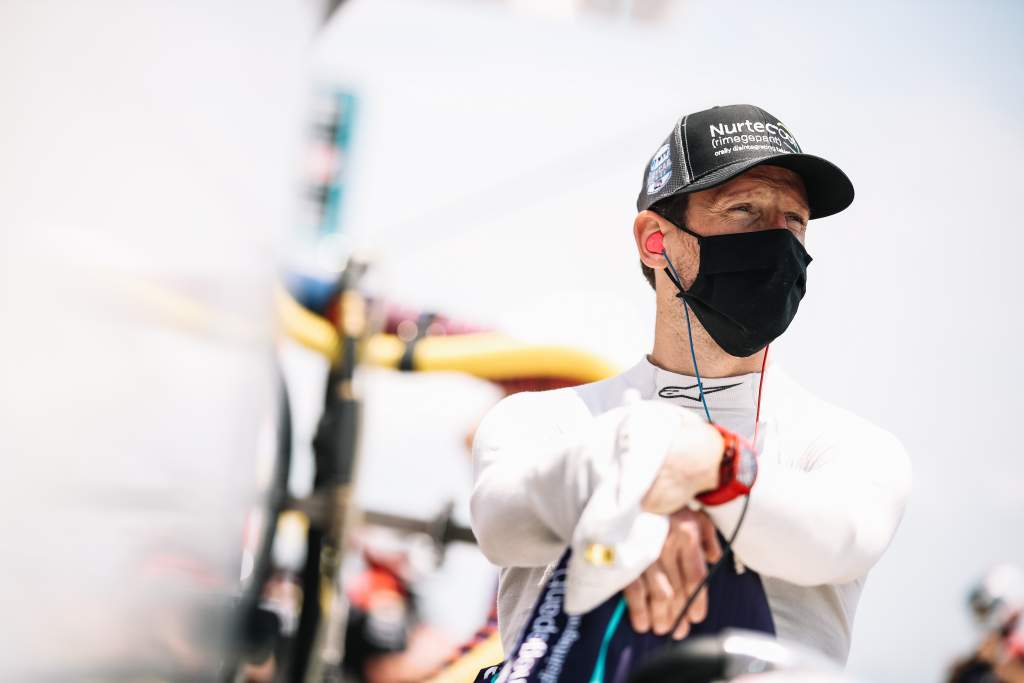
As it stands, Grosjean’s swapped years of life in the F1 midfield for the IndyCar equivalent. However, the margins are much finer in IndyCar and with a perfect weekend at least 10 of the 24-car field could win a race.
The way Grosjean’s started, there’s no reason he won’t be adding to those 10 in the near future and it’s clear that while the results are similar to his often murky Haas F1 days at the moment, this is a very different, loving-his-work Grosjean.
“It’s really fun,” says Boisson. “He’s having such a good time, we’re just having fun, which it’s great when you can have a job and go racing cars and at the same time have fun.
“He’s just happy to be there and we know we’ll keep working at it. He’s a very good spirit always, when sometimes mistakes happen and things like that, he’s always pretty good with the guys and pretty uplifting. So it makes our life a lot easier.
“So it’s been really fun working with him and we’ve been hanging out off the track a lot, which helps building the relationship and trusting each other with the set-up and the feedback and everything.
“So definitely we’re having a good time, which is great.”
Grosjean and the #51 Dale Coyne Racing crew will be back in action on the Indianapolis road course next weekend.


